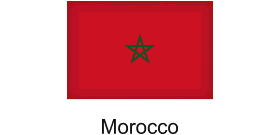 Moroccan Airports See Record Passenger Numbers: Connectivity and Open Skies Policy Drive Growth
Moroccan Airports See Record Passenger Numbers: Connectivity and Open Skies Policy Drive Growth
In 2024, Moroccan airports welcomed nearly 32 million passengers, reflecting significant growth in the country’s air transport sector. Minister of Transport and Logistics Abdessamad Kayouh announced these impressive figures, projecting continued growth to 60 million passengers by 2030 and 90 million by 2035. For African travel agents, these numbers underscore Morocco's increasing importance as a travel hub and highlight opportunities to promote the country as a destination and connection point.
The minister emphasized that domestic air transport is primarily aimed at connecting the country's 12 regions and facilitating travel between airports and cities. To support this goal, a preferential fare system has been implemented. To enhance connectivity and affordability, the government has implemented a support system for preferential fares.
Through a partnership agreement involving several key ministries and Royal Air Maroc (RAM), six agreements have been signed covering various regions, including Dakhla-Oued Eddahab, Laâyoune-Sakia El Hamra, Guelmim-Oued Noun, Drâa-Tafilalet, the Oriental region, and Tanger-Tétouan-Al Hoceïma. This partnership provides a structured framework for regional air transport development. These agreements include several domestic routes. RAM transported approximately 2,284,000 passengers under these agreements.
These include (but are not limited to) the following routes: Casablanca - Dakhla (14 weekly flights), Casablanca - Laâyoune (14 weekly flights), Rabat - Laâyoune (2 weekly flights), Agadir - Laâyoune - Dakhla (4 weekly flights), Casablanca - Guelmim - Tan Tan (5 weekly flights), Casablanca - Guelmim (2 weekly flights), Casablanca - Errachidia (7 weekly flights), Rabat - Errachidia (2 weekly flights), Casablanca - Ouarzazate (4 weekly flights), Casablanca - Ouarzazate - Zagora (3 weekly flights), Casablanca - Oujda (14 weekly flights), Casablanca - Nador (4 weekly flights), Casablanca - Tétouan - Al Hoceïma (2 weekly flights), Tanger - Al Hoceïma (2 weekly flights)
The private airline Air Arabia has also launched new routes, including Rabat - Agadir (7 weekly flights), Agadir - Tangier (3 weekly flights), Agadir - Fez (2 weekly flights), Tangier - Nador (2 weekly flights), and Dakhla - Marrakech (2 weekly flights). With 20 million dirhams in support from the ministry, Air Arabia has transported around 364,000 passengers.
Domestic air transport has been expanded beyond Casablanca with the liberalization of the sector under the "Open Sky" policy, allowing foreign airlines such as Ryanair to operate domestic flights. This liberalization strategy has already led to 14 flights scheduled on 11 routes connecting 9 Moroccan airports since March 2024, including routes like Marrakech - Fez (4 weekly flights), Marrakech - Tangier (3 weekly flights), and Agadir - Fez (2 weekly flights). This strategic decision aims to enhance connectivity and competition within the domestic aviation sector.
The ongoing expansion and liberalization of Morocco’s air transport sector reflect a strategic focus on enhancing connectivity, boosting tourism, and driving economic growth across the country's regions. For travel agents, these developments present new opportunities to create diverse travel packages, promote regional destinations, and cater to both domestic and international travelers. The growth of the country will provide much-needed support to the tourism sector and its sustainability.
